Zempo Kai Ten - Front Roll
Zempo Kai Ten isn't technically a breakfall - it's a rolling technique whose purpose it so minimize impact with the ground an to roll smoothly back up to your feet. You're not trying to break your fall, but rather roll with it.
In it's basic form, it is very similar to the summersault roll you probably learned in kindergarten. The main difference (and a common error newer people make) is that you should Never touch your head to the ground when doing Zempo Kai Ten.
Begin standing with your feet together, then squat down so that only the soles of your feet are on the ground.
Then place your hands on the ground in front of you, palms down and about should-width apart. Tuck your chin tightly into your chest such that you are looking at your belly-button.
From there, push off with your legs, tuck your head between your arms and roll from your hands directly to your shoulders (don't touch the top of your head down). Continue to roll across your back, staying in a tightly tucked position, and come back up to your feet in a squatted position. You may find it easier getting back up to your original starting position if you grab your knees mid-roll with your arms and pull them tightly into your chest, ensuring a tight tuck and helping maintain your momentum.
After practicing the basic front roll from a squat position, you can try it from standing, and eventually by jumping into the roll. It is important to make sure you go directly from your hands to your shoulders when doing Zempo Kai Ten - be sure you don't touch your head down! It might not seem like a big deal when doing it on mats under controlled circumstances, but if you try it on concrete, you'll knock yourself out or worse.
Try to develop the habit of finishing Zempo Kai Ten by coming directly up to your feet and Not using your hands to push off the round to help you up - It'll be a smoother roll (not really a breakfall, even though in Judo we commonly group it in with the rest of the breakfalls) and you'll have both hands free to fight with, should you need to.
To the Techniques List | Top of the Page | Go Back
|
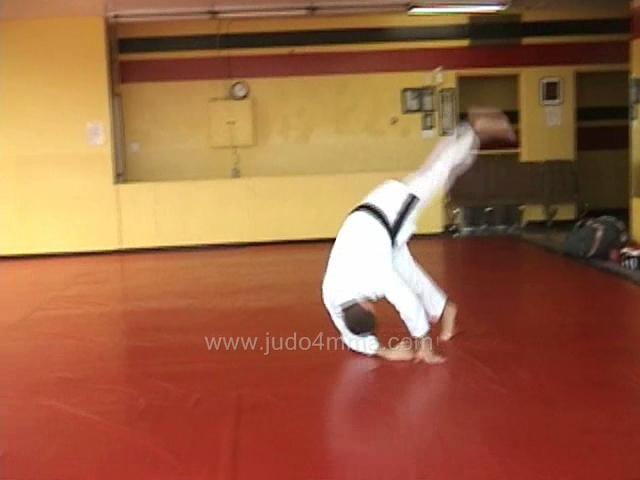 Chugaeri - Shoulder Roll
Chugaeri - Shoulder Roll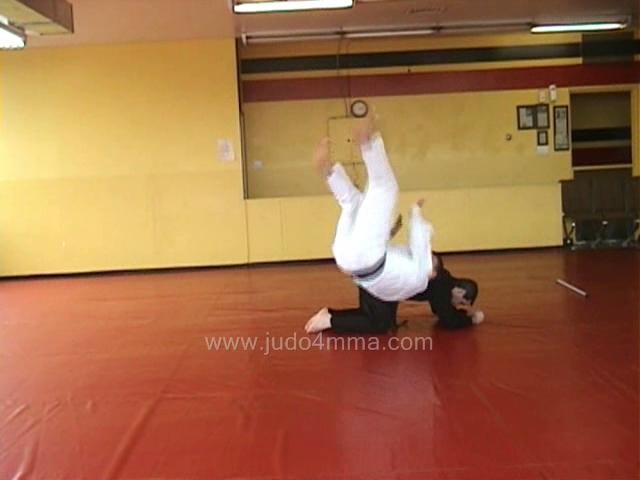 Breakfall Drills - Chugaeri
Breakfall Drills - Chugaeri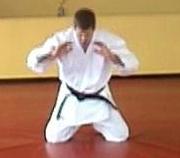 Mae Ukemi- Front Breakfall
Mae Ukemi- Front Breakfall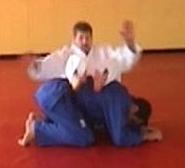 Breakfall Drills - Ushiro Ukemi
Breakfall Drills - Ushiro Ukemi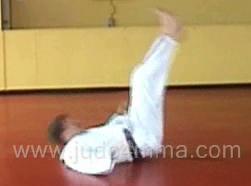 Ushiro Ukemi - Back Breakfall
Ushiro Ukemi - Back Breakfall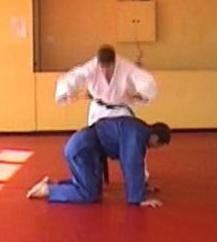 Drills for Ushiro Ukemi
Drills for Ushiro Ukemi 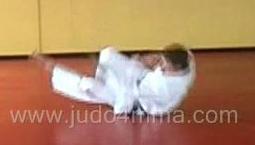 Yoko Ukemi - Side Breakfall
Yoko Ukemi - Side Breakfall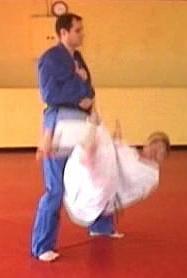 Breakfall Drills - Yoko Ukemi
Breakfall Drills - Yoko Ukemi
